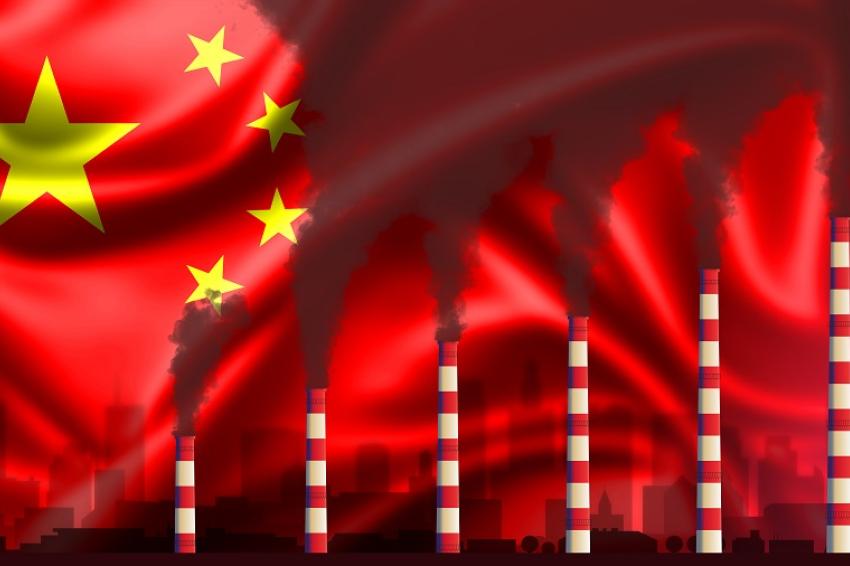Chemicals: A Target for Emission Reductions
China’s Climate Policy and its Impact on the Chinese Chemical Industry
These are now known as the Dual Carbon Goals (DCGs) – achieving peak carbon dioxide emissions before 2030 and emission neutrality before 2060. This puts China somewhere in the middle between the leaders such as Germany (2045) and less developed countries such as India (2070).
China’s current carbon dioxide emissions come mainly from the burning of coal, which in 2022 accounted for more than 70% of China’s carbon dioxide emissions. The Chinese chemical industry also heavily relies on coal as its main energy source – coal accounted for about 56% of total energy consumption of the chemical industry in 2020.
As a result, the chemical industry contributed about 17% of Chinese industrial carbon emissions in 2020, and about 11% of total emissions (these numbers vary somewhat depending on the source). In any case, serious efforts to reduce and eventually eliminate emissions will have a profound effect on the industry in both positive and negative ways.
Threat to Coal Chemicals
Negative consequences are most likely for those segments of the chemical industry that have the highest emissions, the five biggest of which are the production of methanol, ammonia, oil refining, ethylene, and modern coal chemicals. Particularly affected are those which use coal directly as raw materials. Among the top ten chemicals produced from coal, methanol and ammonia are by far the biggest, each accounting for about 30% of the total. The share of what can be described as “modern” coal chemicals (coal-to-gas, coal-to-liquids, coal-to-ethylene glycol) was still relatively low in 2020 at somewhat above 10%, however, this share is still increasing as new such plants are being built.
The Chinese chemical industry relies heavily
on coal as its main source of energy.
This points to a contradiction in China’s policy. Expanding the capacity of these plants – which will need to be run for decades to justify their investment – will maintain China’s carbon dioxide emissions at a level substantially higher than without such plants. This contradiction related to a specific policy is a reflection of a broader conflict between relatively short-term goals (such as stabilizing the economy, providing work in the remote regions where most of China’s coal is located) and strategic goals (such as increasing China’s self-sufficiency and reducing the dependency on oil imports) on the one hand and the longer-term emission targets on the other hand. At least in this area, it seems that the first set of goals is prioritized over the second. Though to be fair, the number of coal chemicals projects has already been reduced, and tighter environmental restrictions are imposed on new applications.
CCUS: A Solution?
One potential solution to at least reduce the emissions of coal chemicals projects is to utilize carbon capture, utilization, and storage (CCUS) projects. Some sources claim that China already has almost 100 such projects in operation or under construction, with a combined capacity of about 4 million tons of carbon dioxide. For example, the Yulin Coal Chemical Company transports captured and liquefied carbon dioxide 150 km to an oilfield, thus also improving the amount of oil that can be extracted.
On the other hand, several areas of the Chinese chemical industry are likely to benefit from China’s reduction of carbon dioxide emissions.
Many Chemical Segments Will Benefit
Bioplastics
The Chinese government promotes the production and use of bioplastics such as polylactic acid (PLA), which can be produced sustainably from natural raw materials. At the moment, the role of such bio-based polymers is still quite limited, but its promotion represents a first step away from fossil sources for plastics and toward renewable, carbon neutral ones. In addition, developing the technology and applications for such new polymers should help Chinese chemical companies to catch up with foreign competitors with substantial more expertise in traditional polymers.
Electrification
China has already established itself as the leading producer of electric vehicles (EV) and the associated materials such as batteries. Driven mainly by strong government support, China accounted for almost 60% of global EV sales in 2022 and has also become a strong exporter partly driven by electric vehicles. Chemical segments associated with batteries for electric vehicles have already profited and are likely to profit more in the future.
Electricity Generation
China already promotes the short-term growth of sustainably generated electricity. The 14th Five-Year Plan (2021-2025) targets an increase of total installed wind and solar power generation capacity from 634 GW at the end of 2021 to 1,200 GW by 2025. China also leads in obtaining patents in areas such as perovskite solar cells. In 2021, China submitted 70 applications, more than South Korea and Japan, the previous leaders, combined.
China is the undisputed leader in solar power generation and also the major producer of solar panels, accounting for about 80% of global production. Chemical companies providing the necessary materials for the production of solar cells clearly benefit from this large share.
Novel Production Processes
In order to reach carbon neutrality eventually, China also examines chemical production processes that can assist this goal. For example, recently the world’s first commercial scale plant converting carbon dioxide to methanol was started in Henan, using captured waste carbon dioxide and hydrogen as feedstock.
A potential other novel process for the production of formic acid could be based on a membrane developed by Chinese and New Zealand researchers. The membrane allows the efficient conversion of carbon dioxide into formic acid, offering a negative-emission route to the chemical.
Hydrogen Economy
Several Chinese chemical companies including state-run petrochemicals company Sinopec are active in establishing the hydrogen economy that is widely accepted to be a requirement to reach net zero. In 2021, the company presented a plan to become the national leader in green hydrogen – though currently, most of the hydrogen produced by the company is coming from gas and coal. But some projects such as a large green hydrogen project in Xinjiang – said to be the largest solar-to-hydrogen project globally – hint at Sinopec’s ambitions (though this specific project has run into problems and is currently only operating at 20% of its capacity).
Climate Concerns and Nationalism often Point to Similar Policies
It is difficult to say whether the promotion of these areas is driven more by climate change concerns or by a desire to utilize emerging areas in which Western countries do not have an initial advantage as opportunities to turn China into a global technology leader. Given Xi Jinping’s background and past statements as well as China’s ambiguous attitude toward coal chemicals, many will rate his credibility as a Chinese nationalist higher than that of an environmentalist. However, in some ways this matters less as long as frequently both motivations lead to China pursuing a pathway to lower emissions.
Author: Kai Pflug, Management Consulting - Chemicals, Shanghai,
China









